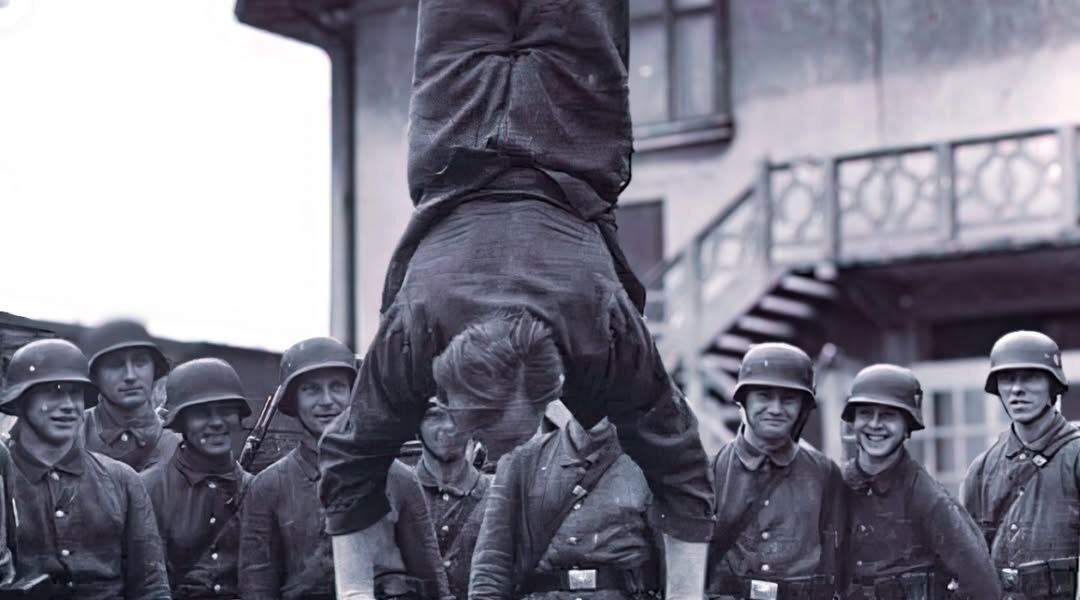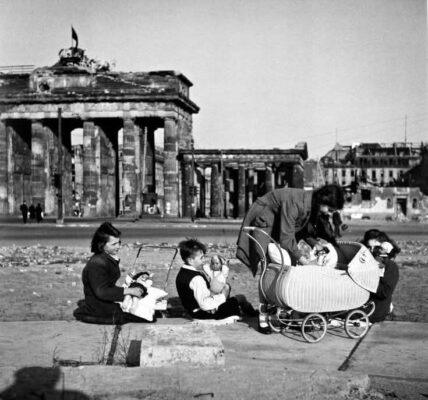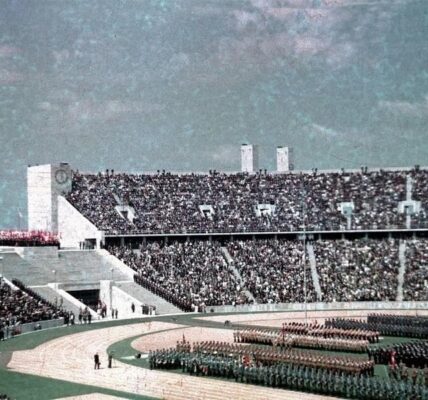The German invasion of the Soviet Union was the greatest surprise attack in military history, yet according to most sources, it should not have come as a surprise. Although the Soviet Union and Nazi Germany had signed a famous non-aggression pact in August 1939, many suspected that Adolf Hitler intended to attack the Soviets—whom he viewed as an inferior race—at the right time. Nevertheless, Stalin seemed unaware of the Nazi leader’s true intentions. In the months leading up to the German advance, he ignored dozens of reports from Soviet spies warning of an impending invasion. He also believed Hitler’s cover-up that the sudden presence of German troops on the Soviet border was merely an attempt to keep them out of range of British bombing raids and even ordered his troops not to shoot at German spy planes, despite numerous “accidental” incursions into Soviet airspace. Stalin’s mysterious confidence in the Third Reich was finally shattered on June 22, 1941, when the Germans launched Operation Barbarossa and invaded the Soviet Union with more than three million troops.
2. Most people believed that Germany would quickly crush the Soviet Union.
Operation Barbarossa was intended to inflict a complete defeat on the Soviets within just three to six months, but in the early days of the invasion, many thought it might come sooner. German troops killed or wounded 150,000 Soviets in the first week of the campaign, while the German Luftwaffe—the Nazi air force—destroyed over 2,000 Soviet aircraft in the first two days alone. As German tanks and troops poured through Soviet territory in a three-pronged assault, most outside analysts began to predict that a Soviet defeat was only weeks or even days away. Despite these early setbacks, the Soviets’ seemingly inexhaustible supply of troops ultimately proved too much for the Germans. While the invaders succeeded in expelling several million Soviet soldiers from the war by November 1941, they also suffered over 700,000 casualties of their own. After a series of fierce Soviet counterattacks, the Nazis had to abandon all hope of a quick victory. The war dragged on for another three and a half years.
3. Extreme weather conditions played a decisive role in the Soviet victory.
In addition to the might of the Red Army, the German troops were also crushed by “General Winter”—the nickname for the deadly Soviet frost. Adolf Hitler’s invasion plans called for the Germans to conquer the Soviet Union before the legendary cold set in. But supply shortages and unexpectedly fierce resistance brought the advance to a halt at the gates of Moscow in late 1941. Still clad in their summer uniforms, the German Wehrmacht had to resort to newspaper and straw to insulate themselves against the subzero temperatures. They soon suffered epidemics of frostbite. By the end of 1941, around 100,000 cases had been reported, leading to the amputation of nearly 15,000 limbs.
The cold also wreaked havoc on the Nazis’ heavy machinery. Tanks and jeeps wouldn’t start, and guns and artillery often froze and wouldn’t fire. The Soviets were accustomed to the cold and used specially designed rifles, skis, and camouflage clothing to continue fighting even in the most inhospitable conditions. The annual frost proved to be a thorn in the side of the German armies for the rest of the war, but the warmer months were little better. Soviet summers were often sweltering, and spring and autumn brought an unbearable rainy season known as “Rasputitsa,” which flooded the roads and often made them impassable.
4. Soviet women served on the front lines.
Soviet-era communism tended to advocate gender equality, and nowhere was this more evident than in attitudes toward female soldiers. Nearly a million Soviet women took up arms and served on the front lines during World War II as anti-aircraft gunners, snipers, partisans, and even fighter pilots. Not only did they provide the Red Army with an unexpected boost in numbers, but they also earned a reputation as some of the fiercest fighters on the Eastern Front. Among them, flying aces Lydia Litvyak and Yekaterina Budanova each shot down about a dozen German aircraft, and sniper Lyudmila Pavlichenko single-handedly killed over 300 enemy soldiers. Eager to prove themselves in combat, women regularly volunteered for some of the most dangerous combat positions. For example, one of the most feared Soviet units was an all-female dive-bomber regiment called the “Night Witches,” which flew nighttime bombing raids behind German lines with its sluggish biplanes.
5. Stalin ordered the Soviet armed forces to fight to the last man.
After witnessing millions of Soviet soldiers being captured in the early days of the German Blitzkrieg, Joseph Stalin issued “Order No. 270” in August 1941. It declared that any soldiers who surrendered or were taken prisoner would be considered traitors under the law and executed if they ever returned to the Soviet Union. Later, the dictator upped the ante with the famous “Order No. 227” of July 1942, better known as the “Not a Step Back!” rule. It decreed that cowards were to be “liquidated on the spot.” This order stipulated that any retreating troops would be fired upon or gunned down by so-called “blocking commandos.” These were special units stationed behind their own lines and tasked with shooting any soldier who attempted to escape. Stalin’s draconian orders were intended to strengthen the Red Army’s fighting spirit, but they were not empty threats. It is estimated that the Soviet blocking troops killed up to 150,000 of their own men during the war, including around 15,000 during the Battle of Stalingrad.
6. The largest tank battle in military history took place.
The Eastern Front is best known for the multi-year Siege of Leningrad and the bloody Battle of Stalingrad, but it was also the scene of the largest tank confrontation of all time. During the Battle of Kursk in July 1943, some 6,000 tanks, 2 million men, and 5,000 aircraft clashed in one of the most strategically important engagements of World War II. The campaign began as the Germans set their sights on a 112-kilometer-long salient, or bulge, in the Soviet lines in western Russia. Hitler delayed the attack for several weeks to allow the Nazis’ new Tiger tanks to reach the front, giving the Soviets time to fortify the entire region. When the German offensive finally began, they were met by a storm of mines and artillery fire that ultimately destroyed hundreds of tanks and claimed the lives of around 350,000 men on both sides. Unable to match the Soviets in this battle of attrition, the Germans reluctantly withdrew from the region on July 13. The withdrawal marked the final gasp of the Nazi offensive in the east.
The battle for the Eastern Front was larger and more costly than the fighting in the West, but also considerably more brutal. Both sides disregarded international law and committed institutionalized cruelties against enemy troops, prisoners, and civilians. The Germans wiped out numerous villages as they advanced through Russia, and Jews and other minorities were regularly rounded up and shot in gas vans or poisoned. Other cities were looted or starved, most notably Leningrad, and up to one million civilians are believed to have died during the 28-month siege. The Red Army responded by showing no quarter during the Soviet advance on Berlin in 1945. Hundreds of thousands of German civilians were shot, burned alive in buildings, crushed by tanks, and even crucified. According to some studies, Soviet troops may also have been responsible for the rape of some two million German women in the final days of the war.
8. The last German prisoners of war were not released from the Soviet Union until 1956.
While the Western Allies released their last prisoners of war in 1948, many German prisoners of war remained locked up in the USSR for several more years. Most were used as forced laborers in copper or coal mines, and between 400,000 and one million eventually died in Soviet custody. At the time of Stalin’s death in 1953, around 20,000 former soldiers were still held by the Soviets, and the last 10,000 were not released until 1955 and 1956—a full decade after the end of the war.




